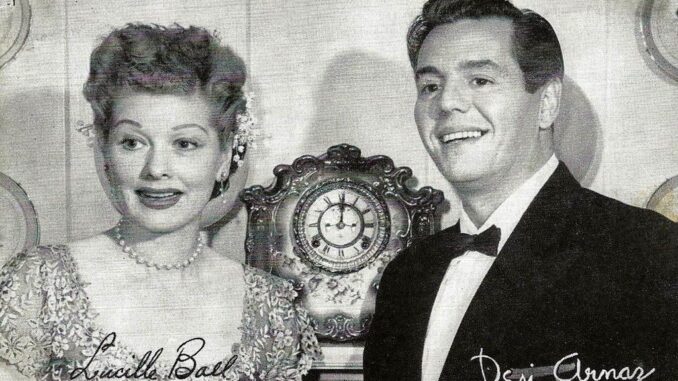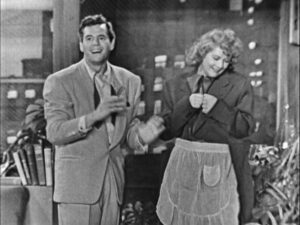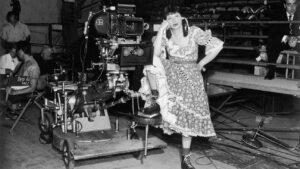
The Start of a Television Revolution
It’s hard to imagine a world without I Love Lucy. This iconic sitcom, which debuted in 1951, set the gold standard for comedy. But what did critics think when it first aired? Let’s take a deep dive into The Hollywood Reporter’s (THR) initial review and uncover the reactions to Lucy and Ricky’s television debut.
A Glimpse Into the 1950s Television Landscape
Before I Love Lucy, television was still finding its footing. Many shows were simple and stagey, but this sitcom changed the game. The show’s unique blend of humor, character chemistry, and innovative techniques caught viewers—and critics—off guard.
Lucille Ball: A Star Already Shining
Even before I Love Lucy, Lucille Ball was a well-known comedic actress. THR’s review acknowledged her talent, praising her impeccable timing and physical comedy. Ball brought a blend of sophistication and slapstick that set her apart from other stars of the era.

Desi Arnaz: More Than Just Lucy’s On-Screen Husband
Desi Arnaz, playing Ricky Ricardo, wasn’t just a co-star; he was a co-producer and a pioneer. THR highlighted his charisma and the dynamic chemistry he shared with Ball. Together, they created a believable and hilarious married couple that resonated with audiences.
The Plot That Launched a Legacy
The pilot episode, titled “The Girls Want to Go to a Nightclub,” introduced viewers to Lucy’s mischievous antics and Ricky’s attempts to keep her grounded. The humor revolved around relatable domestic scenarios, and THR noted how the show perfectly captured the comedic potential of everyday life.
Pioneering Production Techniques
One of the standout aspects of I Love Lucy was its innovative approach to production. Unlike other shows of the time, it was filmed in front of a live studio audience. THR’s review praised this decision, which added an infectious energy to the performances.
A New Standard for Sitcoms
THR wasn’t shy about predicting the show’s success. The review highlighted how I Love Lucy set a new benchmark for television comedy, thanks to its sharp writing and the undeniable charm of its leads.
Audience Reactions: Instant Love
It didn’t take long for I Love Lucy to become a cultural phenomenon. Early viewers were immediately drawn to the relatable humor and the delightful chaos Lucy often brought into her home. THR recognized this connection, noting the show’s universal appeal.

Lucille Ball’s Physical Comedy Genius
One aspect that THR particularly loved was Ball’s knack for physical comedy. Whether it was stuffing chocolates in her mouth or attempting to dance in oversized costumes, her comedic timing was unparalleled.
Desi Arnaz’s Musical Flair
Ricky Ricardo wasn’t just a straight man to Lucy’s antics. Arnaz’s musical interludes added a unique flavor to the show. THR praised his performances, which often provided a charming contrast to the comedic chaos.
Breaking Barriers in Television
Beyond the laughs, I Love Lucy broke barriers. It showcased a real-life interracial couple, a bold move for 1951. THR acknowledged this progressive step, subtly hinting at the show’s cultural significance.
The Role of Supporting Characters
While Lucy and Ricky were the stars, the supporting cast, including Fred and Ethel Mertz, played a crucial role. THR lauded the ensemble cast for their chemistry and ability to amplify the show’s humor.
Criticism and Room for Growth
Even a glowing review has its critiques. THR pointed out minor areas where the show could improve, such as pacing in certain scenes. However, these critiques were overshadowed by the overwhelming praise.
Setting the Stage for Syndication Success
From its first episode, I Love Lucy was destined for more than just weekly laughs. THR hinted at the show’s potential for long-term success, a prediction that would come true as the show became a syndication powerhouse.
The Lasting Legacy of the First Episode
Looking back, it’s clear that THR’s 1951 review was spot on. The first episode laid a solid foundation for what would become one of the most beloved shows in television history.
Conclusion: A Timeless Classic
The Hollywood Reporter’s 1951 review of I Love Lucy’s first episode captured the magic that would make the show a timeless classic. From Lucille Ball’s comedic genius to Desi Arnaz’s charm, the show’s debut had all the ingredients for success. Over 70 years later, I Love Lucy continues to bring joy to new generations, proving that great comedy never goes out of style.
FAQs
1. What was the first episode of I Love Lucy about?
The first episode, “The Girls Want to Go to a Nightclub,” focused on Lucy and Ethel’s plans to go dancing, clashing with Ricky and Fred’s quieter evening plans.
2. How did THR react to I Love Lucy’s first episode?
The Hollywood Reporter gave a glowing review, praising its humor, innovative production, and strong performances.
3. Why was I Love Lucy filmed in front of a live audience?
The live audience added genuine laughter and energy, enhancing the show’s comedic impact.
4. What made Lucille Ball’s comedy stand out?
Ball’s blend of physical comedy, impeccable timing, and expressive acting made her performances unforgettable.
5. How did Desi Arnaz contribute to the show’s success?
Arnaz not only co-starred but also co-produced, bringing innovative ideas like the multi-camera setup and live audience format.
